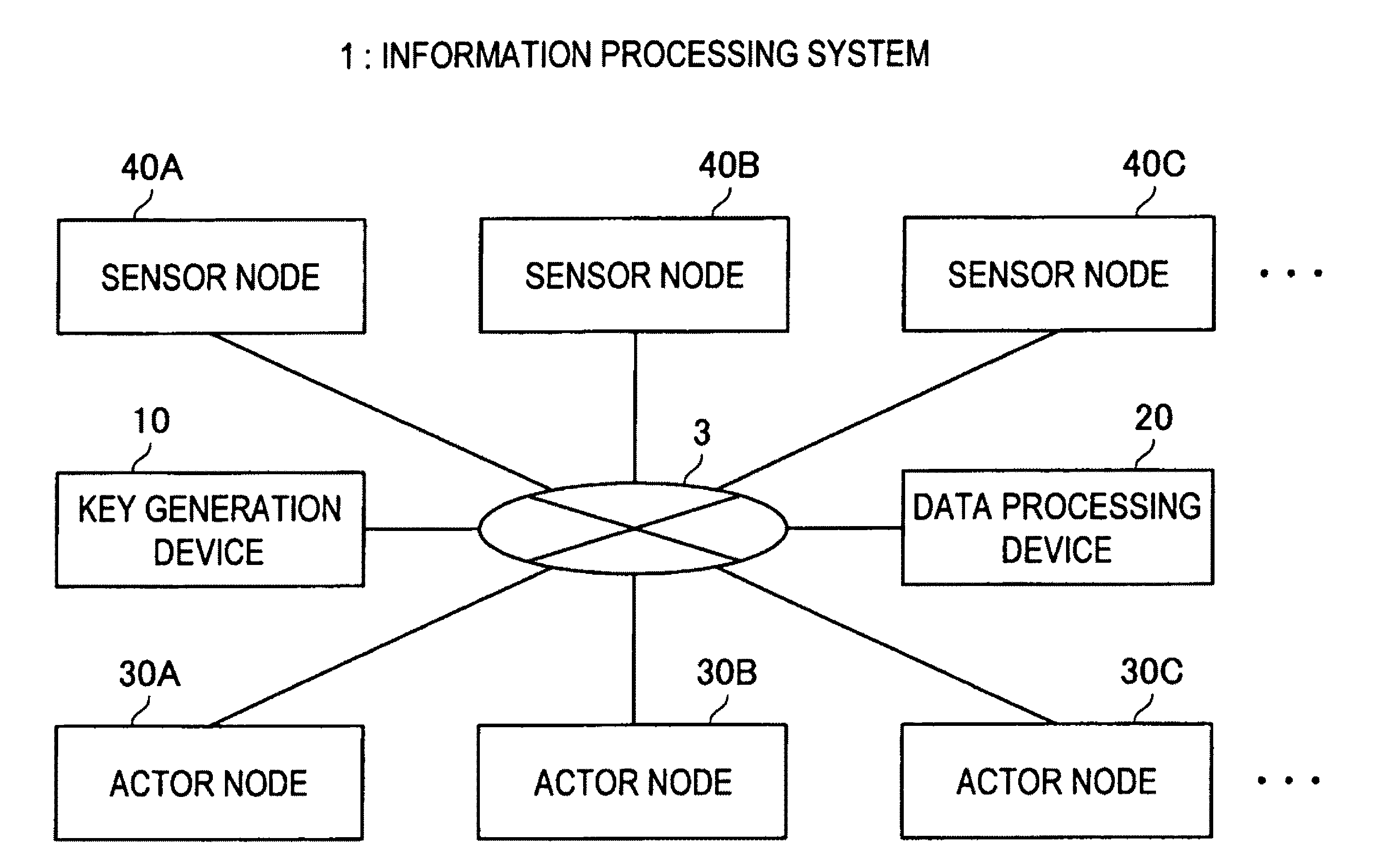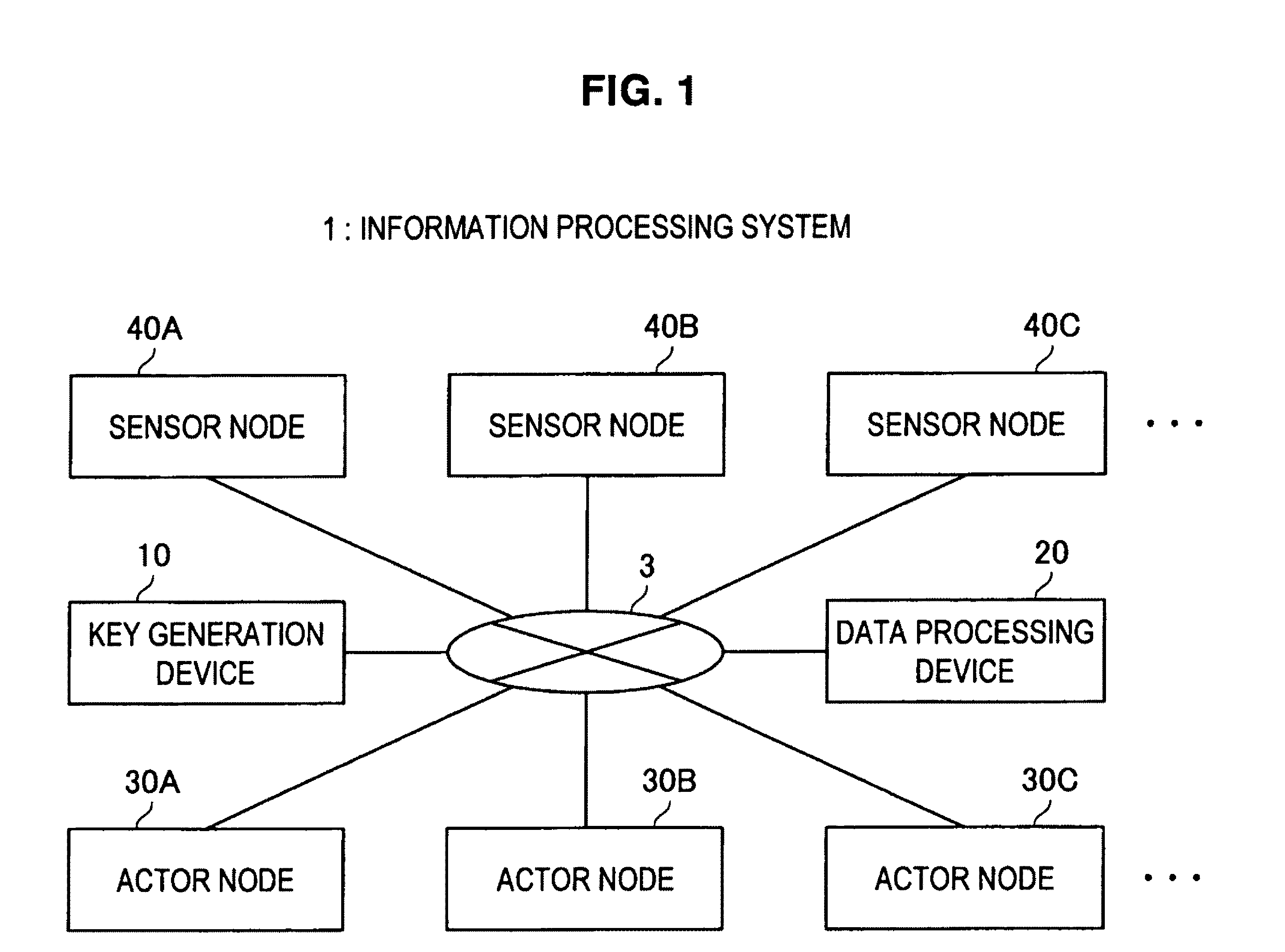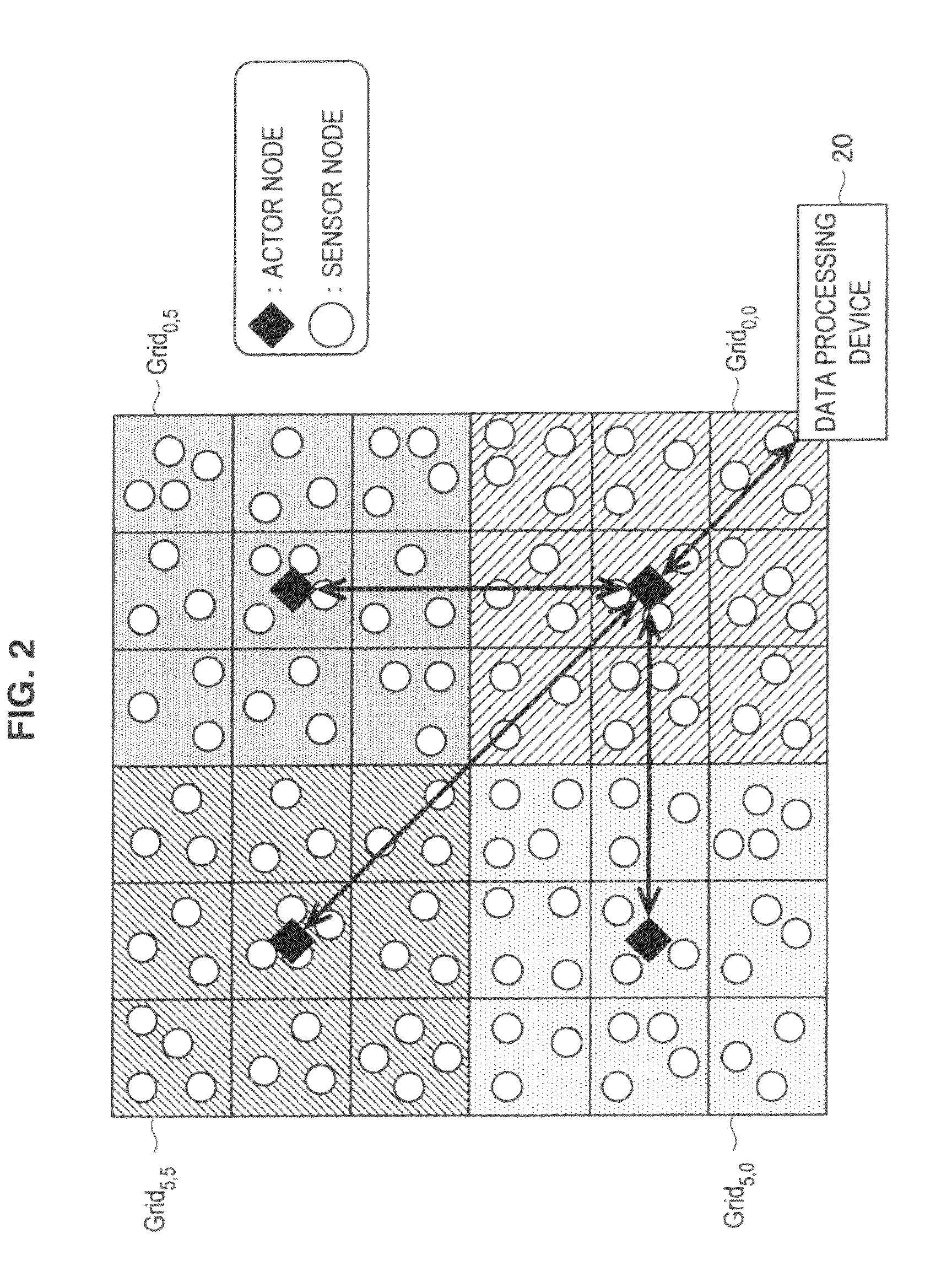Actor node, sensor node, coverage block change method, parameter change method, program, and information processing system
a sensor node and node technology, applied in the field of sensor nodes, can solve the problems that both event handling and data collection cannot be achieved at the same tim
- Summary
- Abstract
- Description
- Claims
- Application Information
AI Technical Summary
Benefits of technology
Problems solved by technology
Method used
Image
Examples
first embodiment
[0080]First, an information processing system according to the first embodiment of the present invention will be explained in detail with reference to FIGS. 1 to 3. FIGS. 1 to 3 are explanatory diagrams for illustrating the information processing system according to the present embodiment.
[Overview of Information Processing System]
[0081]For example, as shown in FIG. 1, the information processing system 1 according to the embodiment includes a key generation device 10 and a data processing device 20. Further, the information processing system 1 includes actor nodes 30A, 30B, 30C . . . (hereinafter abbreviated as actor node 30) and sensor nodes 40A, 40B, 40C . . . (hereinafter abbreviated as sensor node 40). These devices are connected with each other via a network 3.
[0082]The communication network 3 is a communication circuit network for allowing bidirectional communication between the key generation device 10, the data processing device 20, the actor nod...
embodiments
[0407]Subsequently, a specific example of dynamic change processing (processing performed with start of dynamic change) performed by the actor nodes and the sensor nodes will be explained with reference to FIGS. 21A and 21B.
[0408]In the below explanation, the following case will be considered. Coverage grids of an actor 1 to an actor 4 as shown in FIG. 21A in a normal state change to coverage grids as shown in FIG. 21B in response to a certain event. In the below explanation, the processing of the actor 1 will be briefly explained. The processings of the actor 2 to the actor 4 are also performed in the same manner as the below explanation.
[0409]In the normal state, the coverage grids of the actor 1 are nine grids G0,0 to G2,2 as shown in FIG. 21A. When these coverage grids are changed as shown in FIG. 21B in response to an event, it is understood that the grid G3,1 is covered by the actor 1, and the grid G0,2 is covered by the actor 3.
[0410]Accordingly, the dynamic change unit 313 o...
PUM
 Login to View More
Login to View More Abstract
Description
Claims
Application Information
 Login to View More
Login to View More - R&D
- Intellectual Property
- Life Sciences
- Materials
- Tech Scout
- Unparalleled Data Quality
- Higher Quality Content
- 60% Fewer Hallucinations
Browse by: Latest US Patents, China's latest patents, Technical Efficacy Thesaurus, Application Domain, Technology Topic, Popular Technical Reports.
© 2025 PatSnap. All rights reserved.Legal|Privacy policy|Modern Slavery Act Transparency Statement|Sitemap|About US| Contact US: help@patsnap.com



